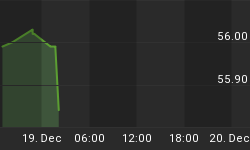INCIDENT: On 7 December, gold hit an all-time high above US$1,425 per ounce (London morning fix), after having risen from under $300 per ounce at the beginning of the millennium and from just over $700 per ounce only a little over two years ago (all figures in current dollars).
SIGNIFICANCE: While the recent spike in the price of gold has already been somewhat redressed, new drivers in the market suggest increasing demand for the precious metal.
BACKGROUND: The price of gold is up 27% this year in dollar terms, as worry spreads over the debasement of currency values worldwide following the US Government's decision to pump trillions of dollars into the global economy. About two-fifths of all newly produced gold is used in investment vehicles, but demand is rising not only for that reason. While a tenth of new gold production goes to industrial uses, half is consumed by the jewelry industry. Increasing numbers of middle-class consumers in what used to be called the developing world have helped to drive world demand. The Indian marriage season, for example, exerts regular annual influences on price variation.
Some mania has been stoked by another proposed way to evaluate the current gold price. If one looks its ratio to the Standard & Poor's (S&P) 500 Index of stocks on the New York Stock Exchange, then that ratio is equivalent to what it was just before the Arab oil embargo of 1973-74. It hit its lowest value in 1981 before retracing to the 1973 level in the early 1990s and then soaring. If one believes that more pain is ahead for the economy today before it finally recovers (as was the case in the mid-1970s), then for the ratio to fall to its 1981 level would imply either an eventual gold price of $7800 per ounce or an S&P level of 220 (or a combination of the two that yields the same ratio).
BOTTOM LINE: Such technical concerns can be confusing and even unhelpful when not given proper grounding. The fundamentals, however, are clear. Increasing consumer demand at the retail level in new markets is not the only fundamental factor that may drive gold prices higher over the long term. Central banks have begun to ramp up gold purchases, and relatively new investment vehicles such as exchange-traded funds (ETFs) are helping to drive prices.
Central banks outside Europe and North America have been on a gold-buying binge since mid-summer. Russia has bought 65 metric tons (all tons in this Intelligence Note are metric tons) of gold since July so as to diversify its foreign exchange reserve holdings. It now holds 775 tons, the eighth largest state holding in the world. Whereas central banks around the world have been net sellers of gold for two decades through 2008 (largely due to sales by European banks), they became net buyers in 2009. The trend has increased since then, with central banks' purchases totaling 91.5 tons in the five months from July through November this year. India has become an important net gold buyer, and China's gold imports for the first 10 months of 2010 amounted to 209 metric tons, compared with only 45 tons for the whole of 2009. This is all the more striking in view of the fact that China is the world's largest gold producer.
ETFs also contribute to rising demand for gold. With the development of ETFs (securities that track a commodity or index of basket of assets but trade like a stock on an exchange) as investment vehicles that can be bought and sold by individual investors directly online without the intervention of human brokers and at discount transaction rates, another source of demand for gold appeared in the markets. (Nor are such ETFs limited to US stock exchanges.) ETFs differ from exchange-traded notes (ETNs), which are unsecured and unsubordinated debt securities, and therefore subject to fluctuation not only from the market value of the underlying commodity but also from the credit rating of the issuer, which can be downgraded without notice. Because ETFs, by contrast, own the commodities they designate (although the ETFs' share-holders do not, even indirectly), ETFs increase demand for the commodity that they represent. The most popular gold ETF on the New York Stock Exchange, for example, happens to be the world's largest private owner of bullion.
Silver is not comparable to gold. Silver is also regarded as a precious metal, but in the markets it tends to behave more like an industrial metal, and indeed it has wide industrial uses. Lately silver's price has been three times as volatile as gold. After hitting a high over $30.50 per ounce on 7 December (its highest since the late 1970s), silver plunged to under $28.50 just two days later: a decline of 6.6% in just 48 hours. Despite the recent lockstep of the two metals' prices, the gold/silver price ratio historically has swung widely over the years. (Gold would have to reach $2,300 per ounce to be at an inflation-adjusted level equivalent to its $850 per ounce peak during the 1980s.) Nor does palladium, also considered a precious metal, behave like gold. Like silver, it too tends to behave as an industrial rather than a precious metal; and it is widely used in automobile catalytic converters.
Source: http://oilprice.com/Metals/Gold/Gold-Makes-Record-Run.html
By. GIR Analysts for OilPrice.com who provide news and analysis on oil prices, alternative energy, commodities and finance. To find out more visit www.oilprice.com
















